Companionship and Capucine

Our fourth grade teacher, that would be when we were nine years old, instructed us each to stand up tell the class what we wanted to be when we grew up. I had absolutely no idea and was panicked at the thought that I would have to just choose something off the cuff like that when there was so little I knew about being a grownup. I was completely at a loss. My turn was coming up. I reached down within, the kind of reaching I used to do when I had to read sheet music to play the viola (which I wasn't very good at), and sought a word, a sign, anything from me to tell me what I was going to be. "A Botanist", I stated, surprising myself.
What was a botanist? I had absolutely no idea. "Very good, Lucy." I was off the hook. "A botanist is a scientist that studies plants." She moved on to the next person, and I pondered that thought. My mother always claimed to have a black thumb. Most plants died at our house, although there was a tangle of greens sprouting from dry prickly clumps of dead things in a perpetual state of thin survival on the second floor landing.
At recess, some different girls invited me to play with them, and one of them confided to me that she also wanted to be a botanist. She was new at the school, and I was happy to be her friend. In the years that followed, we ended up starting a secret picnic group together. This entailed getting permission from our parents to eat at each others' houses for lunch (for which you had to bring a note to school) and then taking off hand in hand into the woods near the watertower by the school, to eat a picnic we'd stashed there and look at plants. We felt so free and rebellious, sprawled on the blanket, sipping alternately from the jug of kool-aid and eating our bagged lunches, magnifying glasses tucked in our pockets.
What was a botanist? I had absolutely no idea. "Very good, Lucy." I was off the hook. "A botanist is a scientist that studies plants." She moved on to the next person, and I pondered that thought. My mother always claimed to have a black thumb. Most plants died at our house, although there was a tangle of greens sprouting from dry prickly clumps of dead things in a perpetual state of thin survival on the second floor landing.
At recess, some different girls invited me to play with them, and one of them confided to me that she also wanted to be a botanist. She was new at the school, and I was happy to be her friend. In the years that followed, we ended up starting a secret picnic group together. This entailed getting permission from our parents to eat at each others' houses for lunch (for which you had to bring a note to school) and then taking off hand in hand into the woods near the watertower by the school, to eat a picnic we'd stashed there and look at plants. We felt so free and rebellious, sprawled on the blanket, sipping alternately from the jug of kool-aid and eating our bagged lunches, magnifying glasses tucked in our pockets.
The garden has still got me fascinated. Bed by bed, I put the plants in varying configurations. I don't like rows. Will this get me into trouble? I will plant groups of things. There is so much to learn. As always, when I am not there, I think about what I'm going to do when I get there. The seeds have all sprouted and it's interesting to see what baby this and baby that look like. The little rhubarb chard sprouts are bright fuchsia, the lettuce sprouts look like ethereal leaflets and the aromatics all look like little white worms squirming their way up into the light. The kohlrabi looked like a four leaf clover for awhile, then stretched out to more of an elongated shape. The beans, coriander and chervil were the last to make their appearance, each seed taking its own allotted time to open and for the shoots to push forth. The vegetable seeds, protected and warm in their little plugs in the city apartment window, have all taken much less time to sprout than the seeds we spread directly on the ground in the mountains last year.
I am focused on companionship. Garlic is something I should plant around the base of the apple tree, a good place too because it can also protect the picnic table from ants. Plants in useful places. I am putting an herb and salad clippings bed on top of a stacked flagstone platform in an awkward place for nibblers. I hope we'll get a chance to have at least a few fresh clipped salads. Herbs in the garden beds help the vegetables to grow and develop their best flavor. I plan to do some triangular beds and some kind of paddy like beds that will make use of a hill. That's where the cucurbits (my gourds and cucumbers) will hopefully cascade down from one platform to the next. There's a pretty flower called Capucine in French, Nasturtium in English, that when planted with my squash plants, will protect them from bugs that eat their stems. It doesn't hurt that the colorful red flowers and beautiful flat round eight segmented leaves are just my style. They'll also be a good addition to summer salads, a spicy cress. A pretty, lucky, spicy cress.
Labels: Le Potager, Printemps 2010
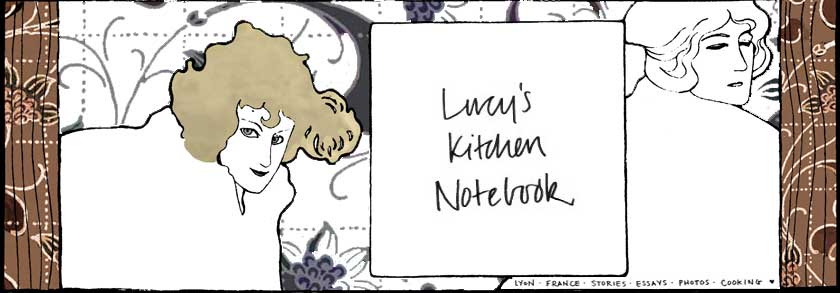









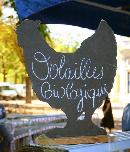
















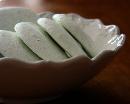








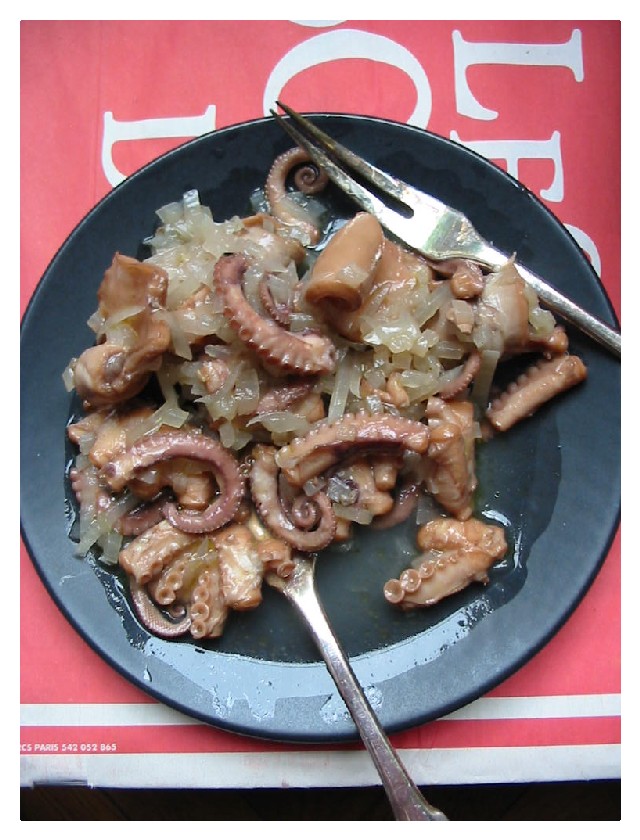


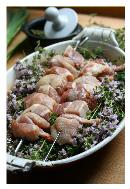













11 Comments:
What a joy to share in your plans this morning! I am also of the no-row persuasion (perhaps from hoeing one too many over the years in that hot Delta sun). I love the gobs of things, the overhanging and the spreading and the little punctuations of bright springy things leaping up from the beds of the small and pale.
Thank you for the remembrance---my Daddy called EVERY flower a "Nashaturtium" and this was a sweet moment of remembering those days.
Hi Lucy:
Though I love your blog because it transports me to France, your posts are keeping me in the mood to design my own backyard garden here in PA! Each year brings more lessons on what to plant, and what NOT to plant. I love that you are doing nasturtiums; they are gorgeous, and can grow pretty much anywhere (I had no idea they were also called "Capucine."
I do have a question for you that harks back to another past post... I am planning on bottling my Vin d"Orange this weekend, but I'm not sure of the best way to do it. I was planning on opening the Mason jar, and then strain the macerated mixture through a cheesecloth before funneling it into bottles. Is that pretty much it, or is there another step I am missing? Also, must I boil and sterilize the bottles beforehand? I am new at this, but very excited! Thanks again for the inspiration!
J
I too love nasturtiums, and how they spill over everything. Beautiful and edible, my favorite kind of plant. I hadn't thought of using them as a deterrent to squash pests, but it makes sense that it would work. I had a horrible squash bug infestation last year. I'm definitely going to try this.
Hello Rachel, Jennifer, and Jenny. Thanks for coming by! I appreciate your comments.
Jennifer, we don't even run the vin d'orange through cheesecloth, we just strain it and bottle it with a funnel. Straining it through the cheesecloth can't hurt it, though. Just make sure you rinse the cloth well beforehand. We usually use old fashioned French limonade bottles, and my mother-in-law Brigitte hammers new corks into the tops of wine bottles. I have seen people use glass bottles with screw tops (like the way juice comes in France) as well. Good luck and I can't wait to hear how yours tastes. L
Thanks so much for the info, Lucy. I saved several French Limonade bottles just for this project. I hope to get to the bottling in the next few days... I'll definitely let you know how it goes, since this is your family's recipe! I did go out and find a decent French Rosé to include in the recipe (though not expensive), and it took a good two months to wait for the Seville oranges to arrive in the stores (here in the NE of USA, early Feb)... but I was so excited to try this out, that it is worth the wait, even before tasting it!
I love your blog; the photography and prose are lovely and inspirational. On the days when I crave to go back to France, I read your blog and instead MAKE something that transports me there (esp. the house in the Alps... swoon).
J
I learned a lot from this post, Lucy. And I agree with Jennifer W. Many's the time this blog has helped me deal with those France cravings.
This was such a beautiful mid-day break. Thank you for sharing your garden. I'll be looking forward to your next update. Also, your secret picnic group story was fabulous.
I wish we could have met last summer and visited your garden :)
We're in the middle of a huge gardening project at the moment, and companion gardening is something I've been thinking a lot as well. It would have been nice to compare notes :)
that's really nice writing. makes me want to get out there and get my hands dirty in the garden. merci!
It also doesn't hurt that green nasturtium seeds are delicious pickled in just cider vinegar and salt.
As always, inspiring! I love dropping by here.
Thanks Jennifer, Mimi, Denise, Pille, Melanie, and Christina, thanks for your kind comments. Christina, oooh, sounds like a good thing to try! I have planted both the dwarf and climbing varieties, so I hope to have them all over the place!
Post a Comment
<< Home